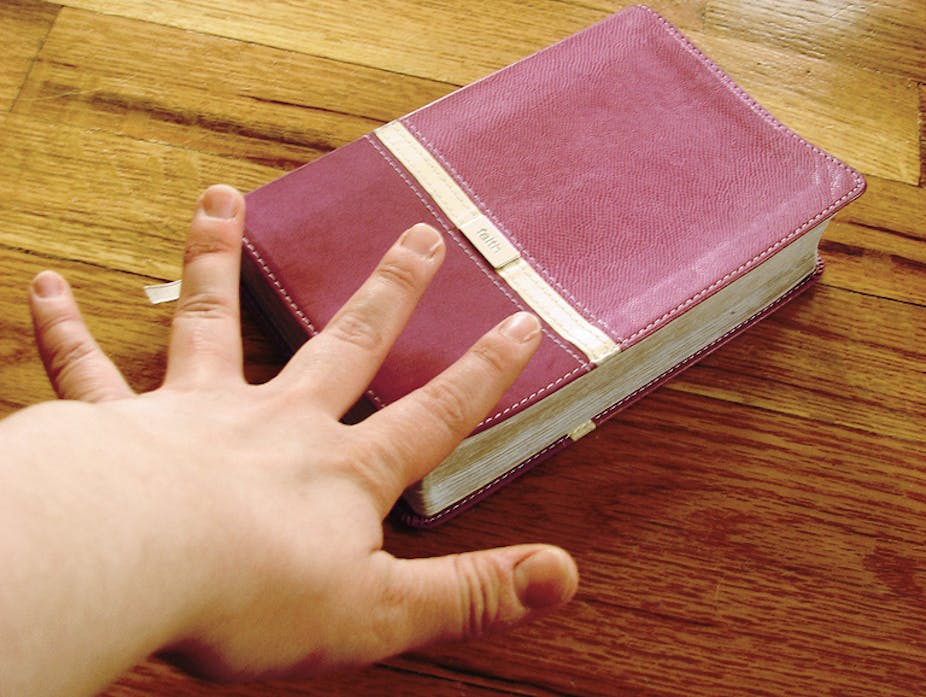The relationship between religion and education is a crucial issue for the UK. Historically, the British school system owes a lot of its shape and purpose to early work by churches and religious groups in setting up opportunities for poor and orphaned children.
That is why, after 1944, faith-based schools were incorporated into the state-funded system. And why they still make up about a third of all schools today. This in turn makes it unacceptable to deny any other serious religion the chance to set up and govern state-funded schools.
In addition to these, some schools are dominated by a religion because of the nature of their catchment area and pupil intake. It was schools like this – academies and state-maintained schools that are not faith-based – which faced severe criticism in the Trojan Horse investigation into extremism in Birmingham schools.
This means that religion and education in this largely secular country are still, and perhaps increasingly, linked in a way that is not permitted for government schools in the US and several other countries.
Religion and school effectiveness
One of the arguments used to defend faith-based schools, and other schools dominated by pupils of one faith, is that they achieve better results with equivalent pupils. They are deemed by adherents to be more effective.
Some, but not all, religiously-dominated schools do indeed have good raw score results. For example, 87% of pupils in Coleshill Church of England Primary School gained level 4 or higher in reading, writing and maths at Key Stage 2 in 2012. This compared to 75% in Birmingham more generally, and 74% in England as a whole. But this is very far from saying that the same pupils would not have achieved as much, or even more, at another local school.
By their very nature, faith schools do not have “equivalent” pupils to other schools. Catholic schools tend to take proportionately fewer poor children than reside in their communities. Muslim schools tend to take more than their “fair share” of pupils of Pakistani and Bangladseshi origin. And so on. This inadvertently creates social and ethnic segregation between schools. It also mean that prior differences between pupil intakes must be taken into account when judging the performance of faith schools.
An official attempt to do this fairly, using contextualised value-added analysis of pupil progress in England, was ended in 2010 by the new coalition government – perhaps because it appeared to offer poverty as an excuse for low school results. Or perhaps because the system had been shown not to work. Value-added scores are an average of the progress made by all pupils while in a school, and so they take into account the prior attainment and background of those pupils. In 2010, as in all previous years for which data is available, almost all schools attained results directly in line with what would be predicted on the basis of the prior attainment and background characteristics of their pupil intake.
There is no evidence that any one school or type of school was consistently better than any other. The same is true of the simpler, not contextualised, value-added results now published instead by the department for education every year.
Few of the large or medium-sized schools of any type have value-added scores clearly distinct from the average. The schools with scores far from average tend to be very small schools with more volatile scores over time, or schools with a considerable amount of pupil data missing. These schools are not disproportionately faith-based schools, although a faith-based Catholic school was judged worst performing in 2010. A secular school for the deaf was among the best performing.
The antithesis of education
Given that a faith-base or faith-dominance does not, in fact, make a school more successful, it may cause the needless damage of social segregation for no real gain.
Education must involve awareness of religion, just as an understanding of the world requires knowledge of economics, geography, or philosophy. But this is very different from teaching any one religion as fact. It also has nothing to do with what some adults might choose to believe in private, having been taught the tools of reasoning and critique through their earlier education.
There are four major religious groups (and a few others) involved with schools in the UK today – Catholic, Anglican, Muslim and Jewish. Their rules and tenets, their stories and justifications disagree with each other. And these differences must be important to adherents of each religion because they have been, and some continue to be, prepared to kill each other over them.
This leads to the inevitable conclusion that at least three of these religions have to be wrong, although a strong evidence-informed argument can be mounted that all four are clearly incorrect. This means that the UK tax-payer is funding schools that are teaching young people things as facts that logically cannot be true. It also leads to unwanted and dangerous social and ethnic segregation between school intakes, in what is meant to be a national school system.
The dangers here range from normalising the long-standing sectarian violence of Northern Ireland with its school system traditionally and strictly segregated by religious denomination, to lowered aspirations for some disadvantaged pupils. In these respects, religion can be seen as the antithesis of a good education.

